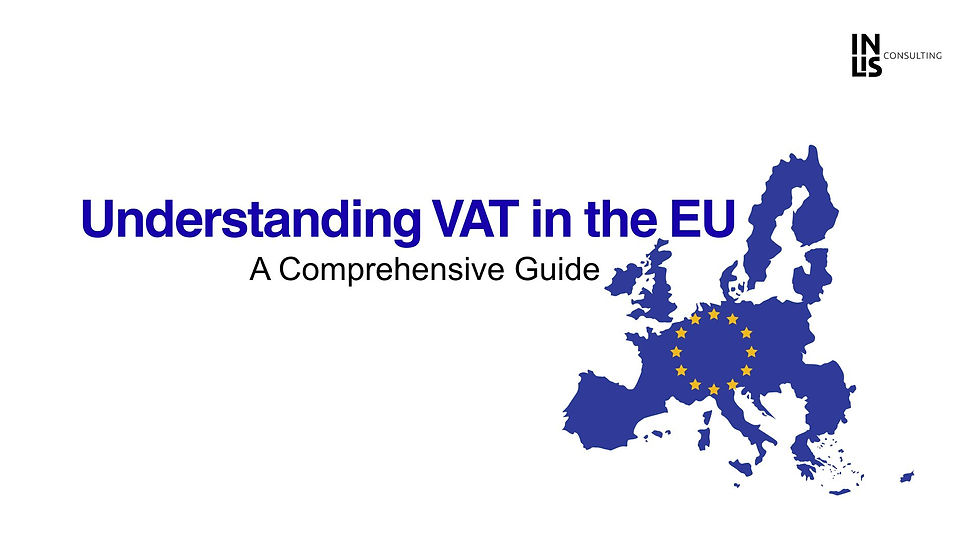Portugal Raises Property Tax for Foreign Buyers
- INLIS Consulting
- Sep 30
- 4 min read
On 25 September 2025, the Portuguese government approved a measure to increase the Municipal Property Transfer Tax (IMT) for non-resident foreign citizens purchasing homes in Portugal (excluding emigrants).

Municipal Property Transfer Tax move is part of a broader package aimed at curbing speculative demand from abroad and relieving pressure on housing affordability for residents.
In this blog post, we’ll break down:
What exactly is changing
The context and rationale behind the change
Potential impacts and challenges
Comparative data
Visual illustrations
What foreign buyers and current owners should watch out for
What Is Changing: Key Provisions
Summary of the main changes announced:
Measure | Details / Scope | Exemptions / Notes |
Higher IMT for non-resident foreign buyers | The IMT (Imposto Municipal sobre as Transmissões Onerosas de Imóveis) for home purchases by foreigners (non-residents) will be increased. | Emigrants (Portuguese citizens living abroad) are excluded. |
IMI exemption for small rentals | The government also announced an exemption from the additional Municipal Property Tax (IMI) for rental properties whose rental income does not exceed €2,300. | This is intended to relieve the burden on small landlords. |
Housing measures in a broader package | Alongside the tax change, measures include building more homes, easing permit processes, and offering incentives for young buyers. | These are intended to address supply constraints and affordability. |
While the announcement confirms the decision, it does not (as of now) provide full clarity on the new rate tiers, thresholds, or exactly how much extra the foreign buyer will pay compared to a resident.
Context & Rationale
The Housing Crisis and Foreign Demand
Portugal has been grappling with a housing shortage and escalating property prices, particularly in urban and coastal zones. Foreign demand—especially from non-EU buyers has been cited as a factor accelerating price growth in attractive locations.
By increasing the tax burden for non-resident foreigners, the government aims to:
Cool speculative investment from abroad
Level the playing field for domestic buyers
Slow the overheating of certain property markets
Use tax policy as a lever to influence demand
It is also a political signal: when locals feel priced out, such measures tend to resonate with public sentiment, especially when foreign buyers are perceived (rightly or wrongly) as “driving up” prices.
Limitations & Questions
However, there are challenges and open questions:
Margin of foreign purchasers: foreign buyers still represent a relatively small share of total transactions, often concentrated in the upper end of the market.
Supply constraints: even if demand is moderated, without substantially increasing supply, pressure will remain.
Unintended deterrents: the measure may deter quality long-term investment or renovations by foreigners, which could slow refurbishment in some areas.
Legal / fairness challenges: non-resident status as a basis for differentiated taxation might face legal scrutiny or complaints about unequal treatment.
Potential Impacts & Scenarios
To illustrate possible financial impact, here’s a hypothetical scenario:
Example Scenario
Property purchase price: €500,000
Buyer A: Portuguese resident
Buyer B: Non-resident foreign buyer
If the new foreign IMT surcharge is, say, +1.5 percentage points over the usual rate (this is hypothetical), the difference might look like:
Buyer | Base IMT (old) | Extra surcharge | Total IMT | Difference vs resident |
Resident | 6% → €30,000 | 0 | €30,000 | — |
Foreign non-resident | 6% → €30,000 | +1.5% → €7,500 | €37,500 | +€7,500 |
Again, the exact surcharge is not yet confirmed; this is just a sample to show how the margin could add up.
The extra cost could:
Reduce the number of foreign buyers in some segments
Shift demand to lower-cost regions or to other investment vehicles
Compress profit margins for developers targeting foreign investors
Comparative View: Portugal vs Other Countries
It helps to see how Portugal’s tax environment compares with other countries popular among foreign real estate investors.
Country | Foreign Buyer Transfer Tax / Purchase Duty | Notes |
Portugal (new) | Base IMT + extra surcharge for non-residents (pending) | Will increase differential burden |
Spain | Around 10%–12% depending on the region, for non-residents | Some regional variation |
France | ~5–7% transfer taxes + notary + registration fees | High upfront costs, but not differentiated by nationality |
Italy | 2%–9% depending on property and usage | For non-residents, similar rates apply |
Portugal’s new differential tax is somewhat unusual: many countries simply apply the same tax burden regardless of residency (though some limit foreign ownership in special zones).
Figures & Illustrations
Below is a conceptual illustration of how the foreign-buyer surcharge might alter effective tax incidence:
Effective IMT burden
| *
| *
| *
| *
| Resident IMT —— 6% -------------
|
| Foreign IMT —— 7.5% (6% + 1.5% surcharge)
|
|____________________________
Property Price
(Caption: The extra “*” area above the resident IMT line indicates additional tax paid by foreign buyers.)
We also show a simplified map concept: foreign buyers might shift from high-tax coastal or urban zones to regions with lower land values.
What Foreign Buyers & Owners Should Watch
If you are a foreign buyer, owner, or investor in Portugal, here are the key steps and considerations:
Monitor the legal implementation
Watch the official legislation to see the exact surcharge rates, thresholds, and effective dates.
Check whether the surcharge is percentage-based or tiered.
Reevaluate your location strategy
You may consider buying in interior regions or less contested zones where demand is lower.
Projects in need of refurbishment might offer more room for yield even with higher tax costs.
Check residency/status implications
Some buyers may seek to become tax residents to avoid non-resident surcharges (if legally feasible).
Understand the criteria for being considered “resident” vs. “non-resident” for tax purposes.
Incorporate into financial modeling
Factor in the extra cost into returns, rental yield models, and exit strategies.
Consider longer hold periods or rental income to compensate upfront tax burden.
Seek local legal and tax advice
Portuguese tax law is complex and regionally variant.
A Portuguese lawyer or tax advisor can help you navigate, optimize deductions, or invoke exemptions.
Conclusion
The Portuguese government’s decision to raise the IMT for non-resident foreign buyers signals a more assertive use of tax policy to moderate foreign-driven demand in the property market. While intended to help locals and cool speculation, its efficacy will depend heavily on how much the surcharge is, how it is implemented, and whether concurrent supply measures succeed.
For foreign investors, it raises the cost of entry and demands more careful financial planning. For Portugal’s housing market, it may slow some of the inflow of overseas capital, but if supply remains lagging, affordability may not improve dramatically.




Comments